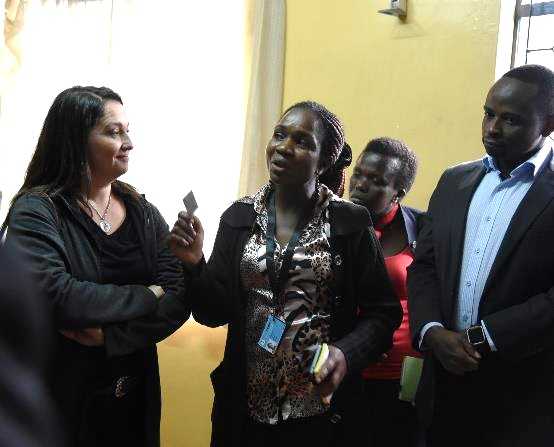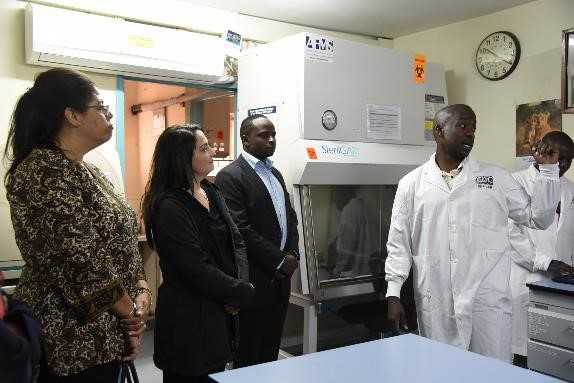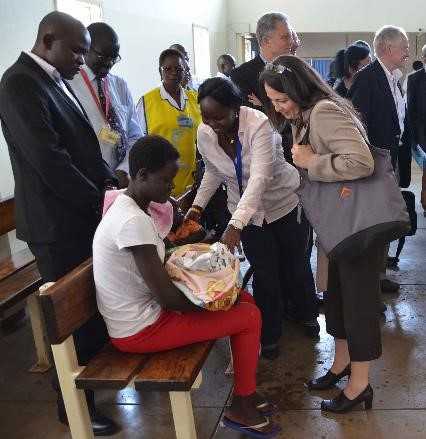DGHT Director, Dr. Shannon Hader Visits Kenya

On September 17th, 2016 Shannon Hader, MD, MPH, Director of CDC’s Division of Global HIV & TB (DGHT), arrived in Nairobi, Kenya to see CDC’s field work in HIV services, TB control and treatment and other emerging public health areas. For more than 30 years, CDC has worked with partners to strengthen health systems in Kenya through science, policy, partnership, and evidence-based action. Funding from the US President’s Emergency Plan for AIDS Relief (PEPFAR) has enabled the delivery of critical HIV services in Kenya.
Dr. Hader, who was joined by Pauline Harvey, PhD, DGHT’s East Africa Regional Associate Director, began her visit by serving as the keynote speaker at the HIV Core Research Symposium and shared ways to strengthen HIV/AIDS treatment, care, and support in Kenya. The following day, Drs. Hader and Harvey, trekked through Kibera—the largest informal settlement in Kenya—to meet with staff of Tabitha Clinic, which is one of 1,500 HIV/AIDS service delivery sites supported by CDC in Kenya. Technical support for Tabitha Clinic also comes from key implementing partners which include the Kenya Medical Research Institute (KEMRI), the African Medical Research Foundaton (AMREF) and Carolina for Kibera.

Staff from CDC-Kenya met with Drs. Hader and Harvey and posed questions ranging from administrative issues to programmatic direction. During the staff meeting, Dr. Hader impressed upon the staff to tell their stories and applauded them for being “never-give-up thought leaders.”

Their 3-day visit to Kenya ended with a trip to Kisumu County by touring CDC-supported facilities, such as Naselica DICE (drop-in-center) and the Jaramogi Oginga Odinga Teaching and Referral Hospital (JOOTRH). At JOOTRH, Drs. Hader and Harvey were introduced to the range of services offered to the community, which include laboratory services, a gender-based violence center and a methadone assisted therapy clinic. JOOTRH, Naselica DICE, and Tabitha clinic are a few examples that demonstrate how CDC is addressing the region's toughest health problems at their source and directly working with vulnerable families and communities in local hospitals, clinics, and labs.
- Page last reviewed: October 24, 2016
- Page last updated: October 24, 2016
- Content source:
Global Health
Notice: Linking to a non-federal site does not constitute an endorsement by HHS, CDC or any of its employees of the sponsors or the information and products presented on the site.


 ShareCompartir
ShareCompartir